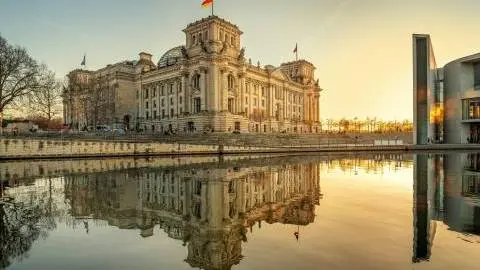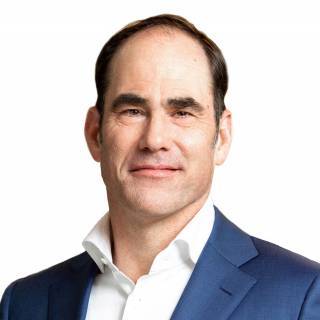Germany election preview: how to make the economy great again
The German economy currently faces many problems. The three most pressing structural economic issues are energy, the changing role of China, and deteriorating competitiveness due to decade-long underinvestment. Here’s what we think needs to be done to tackle these issues
In just over two weeks, the German elections will be behind us. We'll have the results of these crucial elections, which are significant not only for Germany but for Europe as a whole. However, we are unlikely to know the composition of the next German government and its policy priorities. Let’s dive into what needs to be done to make the German economy great again, what the main political parties have to offer, and what could happen after the elections.
How to make the German economy great again – some ideas
The election campaign has entered the final stretch. Several television debates over the next few weeks and strategic voting can still significantly impact the final election results. The two main topics dominating the election campaign are the economy and, increasingly, immigration.
The German economy currently faces many problems. The three most pressing structural economic issues are energy, the changing role of China, and deteriorating competitiveness due to decade-long underinvestment. Here’s what we think needs to be done to solve or at least tackle these issues.
Energy
Germany’s energy sources are renewables and coal. For the sake of the green transition and energy autonomy, the move toward renewable energies needs to continue. However, there are currently two main problems associated with the full shift towards renewables: network problems and insufficient storage capacities to offset periods with no wind or sun, as well as the costs. Consequently, Germany needs to step up investment in renewables and innovation as well as present a better way to accompany this transition by ensuring secure and stable energy imports, subsidising energy prices to ensure stable prices, and/or rethinking nuclear power plants.
China
China’s changing role in the global economy, from a welcome destination for German exports to a fierce competitor in both Chinese and global markets, will be hard to tackle. An obvious route for Germany could be via protectionism at the European level. A subsidy race against China would be lost from the start. A more disruptive way to deal with the China factor could be to completely focus on new sectors that are not prone to Chinese competition. This would require a complete overhaul of the economy or at least industry, in other words: Schumpeterian creative disruption.
Competitiveness
Closely linked to the ‘China factor’ is Germany’s deterioration in international competitiveness, a result of chronic underinvestment by both the public and private sectors over the last decade. To restore competitiveness, Germany needs an investment offensive, reduction of red tape, and structural reforms.
Increasing investment is not only about higher public investments. To revive private investments, the next government will have to provide typical public goods, i.e., a functioning conventional and digital infrastructure as well as education at the highest standards. This will not be possible without stepping up public investments. Further incentives to support private investments should include tax cuts and faster depreciation of certain corporate investments. Finally, to effectively tackle red tape, investment in e-government seem unavoidable.
Additionally, two important economic issues related to competitiveness are defence and pensions. Regarding defence, the new US administration is another argument in favour of stepping up defence spending. The irony is that higher defence spending could eventually also help the domestic industry, as over the last years, the largest part of European defence spending went to the US. However, given Germany’s history, the question is whether Germany and the rest of Europe would like to see Germany spending up to 5% of GDP per year on its military. A better option would be to follow the idea of a European Defense Fund.
Turning to pensions, Germany’s pay-as-you-go system and the projected increase of the old-age dependency ratio from currently some 30% to 50% over the next 25 years require significant structural changes, with options ranging from higher retirement ages to higher contributions, capital market-funded additional pensions, and incentives for individual long-term capital market-based savings.
Sacrificing the Holy Schuldenbremse?
Ah, the debt brake! Looking at the long list of policies needed to make the German economy great again, it is impossible to see any substantial overhaul happening without higher public spending. Just to make up for the underinvestment of the last decade, Germany would need to invest around 1.5% of GDP every year for the next 10 years.
Of course, there will always be room to cut some public expenditures, but finding the fiscal space for all the required policies exclusively in austerity looks like a mission impossible. Therefore, the next government will have to agree on looser fiscal policies, be it via changes to the constitutional debt brake or via special funds, if it wants to achieve a real overhaul of the economy.
From the past, we know that election programmes often look like wish lists or declarations of intention rather than clear proposals cast in stone. The election programmes of the four parties that are most likely to participate in the next government in whatever combination (CDU, SPD, Greens, and FDP) show clear differences in how to tackle the main economic problems.
Energy
All four parties intend to invest more in renewable energy, some more than others. At the same time, however, the SPD and Greens plan to lower energy prices (hinting at subsidies), while the CDU and FDP want to reopen nuclear power plants and invest in micro-nuclear reactors.
China
China is featured in all party programmes, being mentioned approximately 10 times in each. While China is significant in terms of derisking and foreign policy, no party integrates a response to China's transition with specific policy proposals.
Competitiveness
As expected, the economy plays an important role in all party programmes. All four parties plan to reduce income taxes. However, while the CDU and FDP are also in favour of corporate tax cuts, the SPD and Greens are proposing subsidies for corporate investments. All four parties plan to reduce bureaucracy and stimulate innovation; the ‘how’ often remains unclear.
Debt brake
When it comes to financing their plans, most parties remain vague. The German research institute ‘Institut der deutschen Wirtschaft’ (IW) estimated that the proposals could cost between 30bn euros (SPD) to 138bn euros (FDP). While the SPD and Greens want to finance investments with a 100bn euro fund, the CDU and FDP hope for higher economic growth over the next few years and want to stick to the current constitutional debt brake.
The far-right AfD is currently the second-strongest political party in Germany. However, due to some parts of the party's questionable assessment of Germany's Nazi history, it seems unlikely that the AfD could become part of the next government. In terms of economic policies, the party follows a conservative liberal approach of cutting taxes, increasing investments, returning to nuclear power plants and restarting trade with Russia. The AfD also wants to stick to the debt brake, leading to an even larger funding gap, according to the above-mentioned assessment by IW. Also, proposals such as Germany leaving the monetary union and an end to the EU currently do not make the AfD a realistic coalition partner.
Better, but not good enough
Taking all these proposals together, Germany has an almost stereotypical election campaign when it comes to the economy. Centre-left parties are in favour of debt-funded investments, while the centre-right parties hope for the positive effects of deregulation on growth to finance tax cuts. At the same time, it is becoming increasingly clear that even in a best-case scenario with reforms and investments, any new government will not try to overhaul the old economic business model but rather try to rejuvenate the old one. Less red tape, some tax cuts to stimulate spending and investments, possibly attempts to lower energy costs and infrastructure investment – all of which feature in any European economist’s wish list, and a growth booster for the economy, at least temporarily.
Whether these measures will really be sufficient in competing against China and the US is a completely different question. What Germany would get after the elections is a refurbished model of its economy – clearly better than the old one with cracks, battery failures, and very few gadgets, but also not a shiny, sparkling new model that makes the competition speechless.
What do the polls say?
So, who will be responsible for the refurbishment? Two weeks before the elections, the CDU and Friedrich Merz are still leading in the polls, with slightly above 30% of the votes, while the AfD stands second on some 20%. The SPD currently stands at 16% and the Greens at 14%, while the “conservative-left” Sahra Wagenknecht Alliance (BSW), FDP, and left-wing Die Linke are predicted to score 5%, 4%, and 4% respectively.
Remember that the German election system is complicated as it is a hybrid election system in which voters cast one ballot for a candidate representing a constituency and a second for a particular party’s list of candidates in a federal state. Only parties that win 5% of the second vote can enter parliament. However, parties that win at least three constituency seats (‘Direktmandat’) will still be entitled to seats in parliament even if the national vote for the party is below 5%. As there is another party, Freie Wähler (Free Voters), in Bavaria which could also clear the 5% hurdle or get three constituency seats, the next assembly could consist of between four and eight parties. This makes any prediction of the distribution of seats (and majorities) extremely difficult.
To complicate things further, after the murder of a two-year-old boy in Aschaffenburg, the political debate has shifted away from the economy to immigration and the question of how to deal with the AfD. The CDU’s leading candidate, Friedrich Merz, presented a law-and-order plan that he would implement on the first day in office, brought a motion into parliament which was backed by the AfD and unsuccessfully tried to bring in a law asking for stricter immigration. These moves have sparked a discussion on whether or not the CDU might be tempted to work together with the AfD after the elections – something the CDU publicly strictly rules out. However, the tone and content of the debate will make it almost impossible for the CDU to form a coalition with the Greens. Currently, a coalition with the SPD would not break over stricter immigration laws, but no one knows how the SPD will position itself after the elections. In case of a severe defeat, it is hard to see how Olaf Scholz would still lead the SPD. Whether such an event would then lead to the party’s shift towards the political right or left remains uncertain.
All in all, and returning to the starting question of how to make the German economy great again, a majority for either SPD and Greens or CDU and FDP would bring the highest level of policy certainty, though with very different priorities. Such a two-party coalition would probably avoid the permanent in-house quarrels the current government had. However, it looks unlikely that the German voter will give such clear guidance. In fact, it increasingly looks like the German elections will be over two weeks from now, but finding the next German government will take much longer.
This publication has been prepared by ING solely for information purposes irrespective of a particular user's means, financial situation or investment objectives. The information does not constitute investment recommendation, and nor is it investment, legal or tax advice or an offer or solicitation to purchase or sell any financial instrument. Read more
Tags
GermanyDownload
Download article
6 February 2025
German election countdown 2025 This bundle contains 4 Articles
